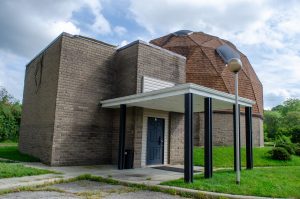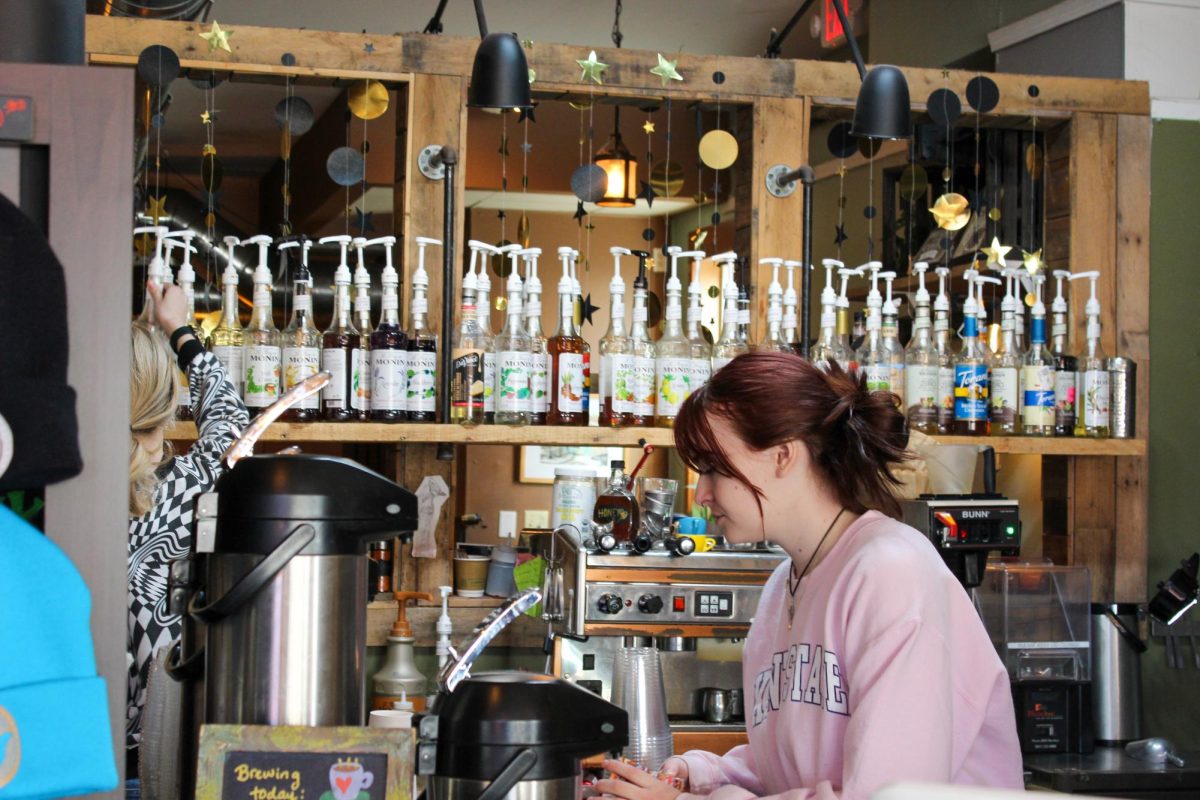Memories of the past and hopes for the future of reservations
January 25, 2013
Victoria Humphreys attended her first funeral in the Arizona desert when she was in fourth grade. A traditional Pima burial, family and friends dug the grave, lowered the casket into the ground with ropes and tossed dirt onto the coffin until the grave was filled.
Humphreys’ next funeral was a military funeral for her grandfather. When the service ended and mourners began to walk away from the unburied casket, Humphreys and her two younger brothers panicked, unable to understand why they were abandoning her grandfather’s body.
For Humphreys, who spent her childhood on and off of Indian reservations, culture inconsistencies were a normal part of growing up. As a child, her world was a melding of modern conveniences and ancient traditions. The cultural rituals observed on the reservation contrasted sharply with her experiences in society elsewhere.
Humphreys, a senior communications major, who is from both Pima and Hopi Indian backgrounds, spent parts of her childhood on Gila River Indian Community in Arizona and on the Cherokee Reservation in North Carolina.
Shocking Poverty
When CJ Lyons, junior pre-nursing major, visited Pine Ridge reservation in South Dakota in 1999, he was shocked to find living conditions he compared to “a junkyard inhabited by people.”
Lyons, who is from Cherokee and Choctaw backgrounds, visited both Pine Ridge and the Cherokee reservation in North Carolina. He said socioeconomic status and living conditions often vary from reservation to reservation.
“I knew reservations were generally poor, but seeing it was just shock and pity,” Lyons said. “I couldn’t believe people actually lived like that and survived. It was sad, and they don’t generally know any better. Cherokee was the complete opposite, at least the part we visited. It was just too touristy and played to the wants of the stereotypical Native American.”
Reservations exist throughout the country, each with its own unique tribal identity, customs, beliefs and socioeconomic status.
“You have to separate Eastern reservations from Western reservations,” Lyons said. “Eastern reservations have learned to accommodate, so you have a lot of nice reservations.”
Humphreys, who lived on the Cherokee Reservation briefly as a child, said she remembers it as a tourist-oriented reservation where the residents made money by putting on shows and selling souvenirs. As a result, the reservation features new, well-maintained buildings, and the residents enjoy a comfortable standard of living.
This sharply contrasted with the living conditions on the Pima Gila River Indian Community, where Humphreys lived and visited on several different occasions. Gila River is a large community made up of 700,000 acres and seven districts.
“I lived in District three, which is the capital, I guess you could call it,” Humphreys said. “That’s where all the governmental buildings are… A lot of the houses though… there are some houses with tin roofs and cardboard walls, and then there are some with bricks and stuff. My grandpa was the first one to get an actual house on the ‘Rez,’ but it took him 20 years to be able to get it processed because of all the rules and regulations they have.”
Humphreys said many Gila River residents do not have electricity or running water in their homes. Some can’t afford it, while others choose not to, usually because of centuries-old cultural traditions.
Lyons said his visit to Pine Ridge Indian Reservation in South Dakota struck him because of the extreme poverty and poor living conditions residents face.
“If you see it, it’s a culture shock, because you’re like, ‘Wow. This happens in America?’” Lyons said. “They’re freezing to death in the winter time because they don’t have clothes to keep them warm. There will be 10 children in a bed trying to keep warm together. That’s how reservations are out West. It’s depressing.”
Humphreys said Gila River’s school system reflects the poverty found there.
“The first time I saw the elementary school on the reservation, it’s this little rundown building that’s got graffiti on it,” Humphreys said. “There’s not enough money sometimes for books. And the thing that freaked me out was there’s no room to play outside. Like, [there are] these six-foot barbed wire fences. I don’t know why the fences are there.”
View Gila River Indian Reservation in a larger map
Losing a generation
Lyons said diabetes, heart disease and alcoholism are some of the biggest problems Native Americans face while living on reservations. Humphreys said the Pima people have the highest rate of diabetes among any group of people in the world.
Cami Falcon, senior sociology major, visited her family on their reservation as a child but didn’t get the full experience of reservation life until she moved from the city to North Dakota’s Fort Berthold Reservation as an adult.
Falcon said children growing up on reservations face obstacles with drugs and alcohol. Because reservations offer few youth programs, many turn to drugs or alcohol because there is little else for them to focus on.
“My grandpa grew up on that reservation, and my mom grew up there, and my dad did,” Falcon said. “My grandpa is afraid sometimes to even go there now because it’s changed so drastically.”
Humphreys said suicide and drug-and-alcohol- related death rates are at an all-time high among reservation teenagers. Adults in Gila River worry that the present generation of young adults will be lost to drugs, alcohol and violence.
Moving forward
Falcon said despite common stereotypes, many Native Americans are able to build successful careers after reservation life. Her mother and stepfather’s ability to succeed after growing up on a poor reservation in New Mexico inspired her to choose a career that would allow her to help improve conditions there. Falcon said she plans to use her sociology degree to work with troubled reservation youth.
“Some of my family still lives on the reservation, and a lot of the children on my dad’s side, they do drugs and [drink] alcohol,” Falcon said. “They need more programs where instead of engaging in the bad stuff, they’re doing good stuff. If we don’t start with the youth, it’s not going to go anywhere.”
Falcon said her mother and stepfather helped her realize the importance of improving reservation life.
“My mom works for a health clinic on a reservation, and my stepdad, he works for the Native Americans in the Northwest, and he’s a policy analyst,” Falcon said. “I think that’s why I want to get into the field that I want to get into. … All of my family wants to improve [reservation] life… and if nobody does that, it won’t happen.”
Contact Katherine Schaeffer at [email protected].














